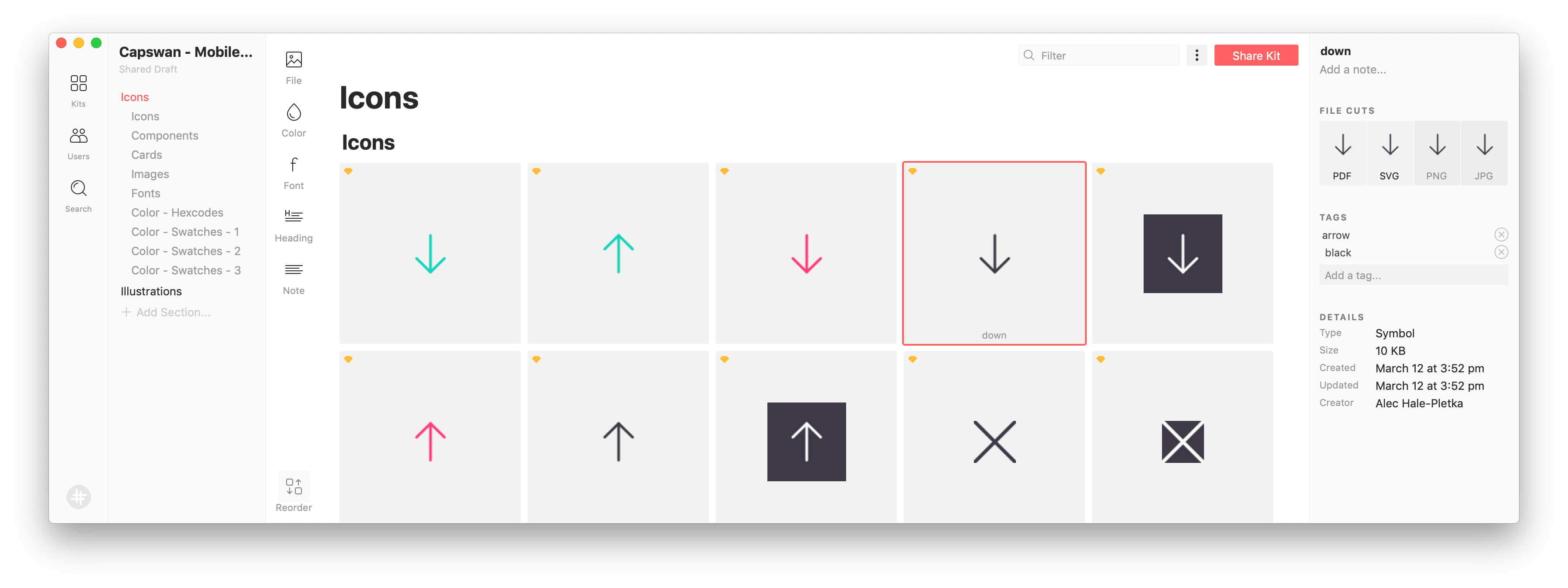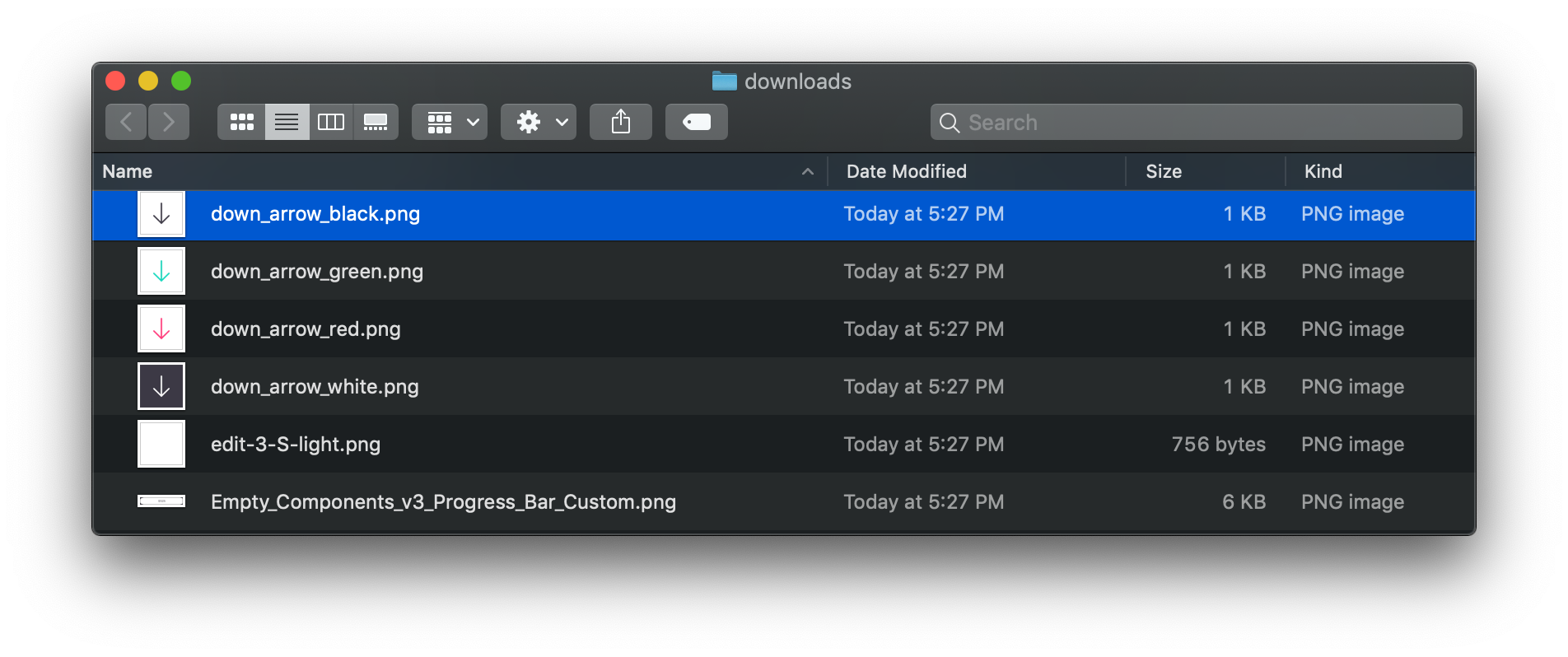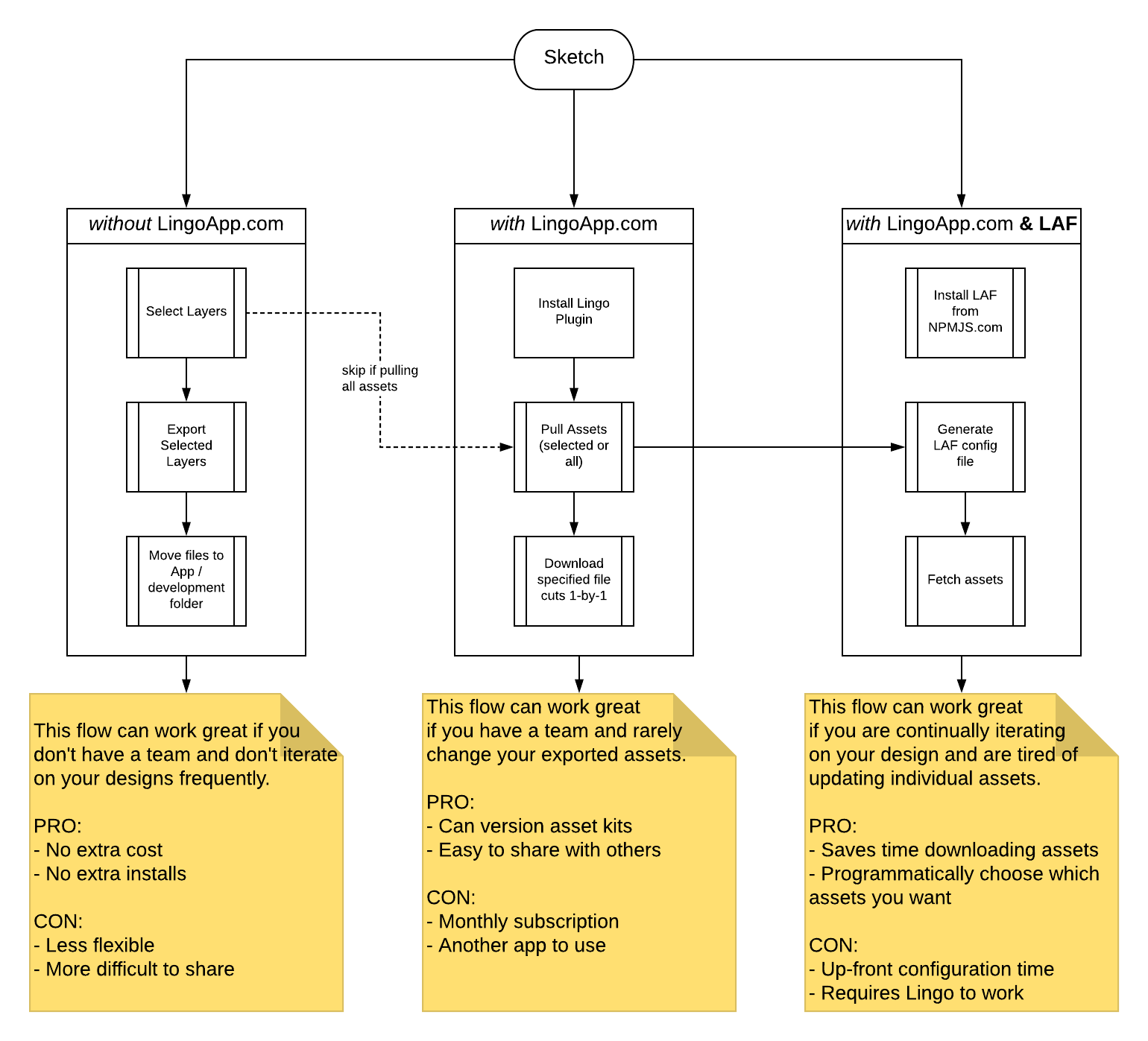
Automate asset retrieval from lingoapp.com
Changelog
| Version | Description |
|---|---|
0.3.4 |
Adding Changelog to readme |
0.3.3 |
Updated laf-lib, which changes the default API rate limit from 2000 to 200. This may be reverted in the future |
Install
npm install laf -g
Usage
In order to use LAF you will need two files in your current working directory:
-
.laf.jsonThis is your config file.
-
.envYou might already have this file. If that's the case, you just need to add your SpaceID & API Token. Both are supplied by LingoApp.com.
SPACE_ID=''
API_TOKEN=''
1. Generate Config File
Video Tutorial (1/2): laf gen
Config file is required. Using generator to create the config file is optional.
$ laf gen
Sample Config
Generated (Partial)
Generated & Edited (Complete)
Output at this point
-
.laf.jsonwith semi-filled configThe tutorial in "Fetch files" walks you through finalizing this config
-
.envwith empty SPACE_ID & API_TOKEN keys
2. Fetch files
Video Tutorial (2/2): laf fetch
$ laf fetch
CLI Flags
You can call
laf fetchwithout specifying flags. Flag defaults are listed below.Visit here to read more about Lingo's available file cuts. This will show you what you conversion possibilities.
| Flag | Alias | Description | Defaults |
|---|---|---|---|
| --out | -o | Download directory | "./downloads" |
| --cut | -c | File type | "PNG" |
Examples
- $
laf fetch --out "./downloads" --cut "JPG" - $
laf fetch --out "./assets/foo" --cut "PNG"
Output at this point
All of your files downloaded to the output directory you've specified
Appendix
A. How file names are constructed
Downloaded filenames are a concatenation of asset name & tag names. Consider the following image:

The highlighted "down arrow" would be named:
down_arrow_black.png as you can see here:

B. Sketch + Lingo + LAF - Workflow Comparisons

C. Related
This CLI wraps lingo-asset-fetcher-lib
@github: lingo-asset-fetcher-lib@npm: laf-lib
D. Video Tutorials
E. Blog
Explores the thought process behind LAF + future plans:
Image download automation with Lingo & LAF